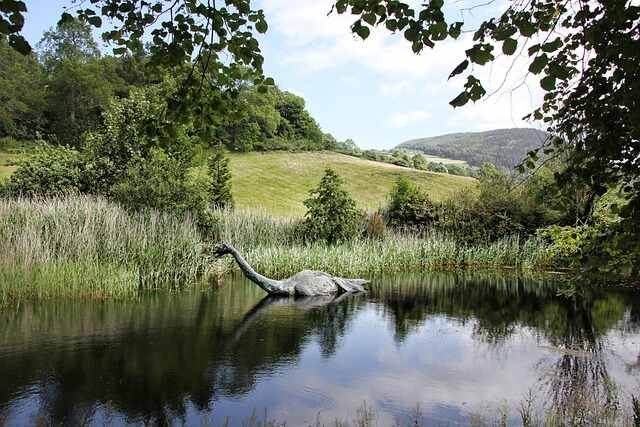Loch Ness Mystery Unveiled
People are still curious about the Loch Ness Monster in Scotland. They use new equipment to search the entire lake, even in challenging weather. This helps them find new marine animals or underwater caves that haven’t been discovered before.

Photo of the Loch Ness Monster published on April 21, 1934. Marmaduke Arundel “Duke” Wetherell, Public domain, via Wikimedia Commons
What is the Loch Ness Monster?
The Loch Ness Monster, also known as “Nessie,” is a mythical creature believed to live in Loch Ness, a large lake in Scotland. Descriptions portray Nessie as a long-necked, serpent-like creature with humps. The Loch Ness Monster is believed to live in Loch Ness, the second largest lake in Scotland, and the second deepest lake. It’s a stunning location located in the Scottish Highlands and a must-see for any Lord, Laird or Lady, especially if they wish to catch a glimpse of Nessie.
Read also: Multi Headed Serpent of Myth | Greek Mythological Creature
History of the Loch Ness Monster, a legend that dates back to Antiquity
The presence of a monster in Loch Ness is a legend that dates back to Antiquity: stone carvings made by the Picts who then lived in the region depict a mysterious beast with fins. The first written record of the creature dates back to 565 AD, in a biography by an Irish monk, while the first modern sighting of Nessie was reported in a local newspaper in May 1933.
In 1934, English physician Robert Wilson took what came to be known as the “surgeon’s picture,” an image that appears to depict Nessie’s head and elongated neck emerging from the water. The photo, published in the Daily Mail, was a hoax but propelled the Loch Ness monster to international fame.

False scientific illustration of the Loch Ness monster, produced with the support of generative Artificial Intelligence (Midjourney). Midjourney AI; prompted and modified by Triton, CC BY 4.0, via Wikimedia Commons
The Scots relaunch research
In 1972, the Loch Ness Investigation Bureau undertook the largest search to date, to no avail. Then, in 1987, during Operation Deepscan, sonar was deployed across the entire width of the Scottish lake and its organizers claimed to have found an “unidentified object of unusual size and strength” in the depths. Finally, in 2018, researchers conducted a DNA study of Loch Ness to determine which organisms live in its waters. Nothing was ever found except numerous eels.
The Loch Ness monster fascinates and intrigues. For this, research operations are being carried out from August 26 and 27, 2023. With one objective: to unravel the mystery of one of the most famous legends in the world.
Drones equipped with thermal scanners, boats with infrared cameras, hydrophone… All means are being used to try to unravel the mystery that has captivated the entire world for generations.
Despite many attempts to find Nessie using various technologies, no scientific evidence has been found. The legend remains popular in Scottish folklore, attracting interest from cryptozoologists and tourists. Nessie’s mystery continues to captivate people, leading to books, documentaries, and widespread speculation about what might be in the lake.
Hoaxes, A media creation
The myth of the Loch Ness Monster gained worldwide fame in the years 1933-1934. Tourists from different countries claim to have seen it. The most famous photo of the monster was taken in 1934 and published in the Daily Mail. It shows the head and neck of the animal emerging from the lake, surrounded by concentric circles formed by the water. The photo went around the world, but a few years later, its author, gynecologist Robert Kenneth Wilson, admitted that the photo was a hoax. It was a plastic toy.
One of the residents of Loch Ness also fueled the myth. In his will, he explained that he had carved a wooden monster, and that he had fun taking it out to fuel the legend. Its construction was actually found in its hangar. But thanks to this representation of the monster, the myth has persisted and especially attracted tourists. The tourism sector employs around 200,000 people in Scotland and has a turnover of £4 billion.

The ruins of Urquhart Castle at the shore of Loch Ness, Scotland. View of Loch Ness in Scotland, reported home of the monster. Daniel Kraft, CC BY-SA 3.0, via Wikimedia Commons
Sources: Visit Inverness Loch Ness, PinterPandai, CNN, Google Arts & Culture
Photo credit (main picture for ilustration only): GregMontani via Pixabay



